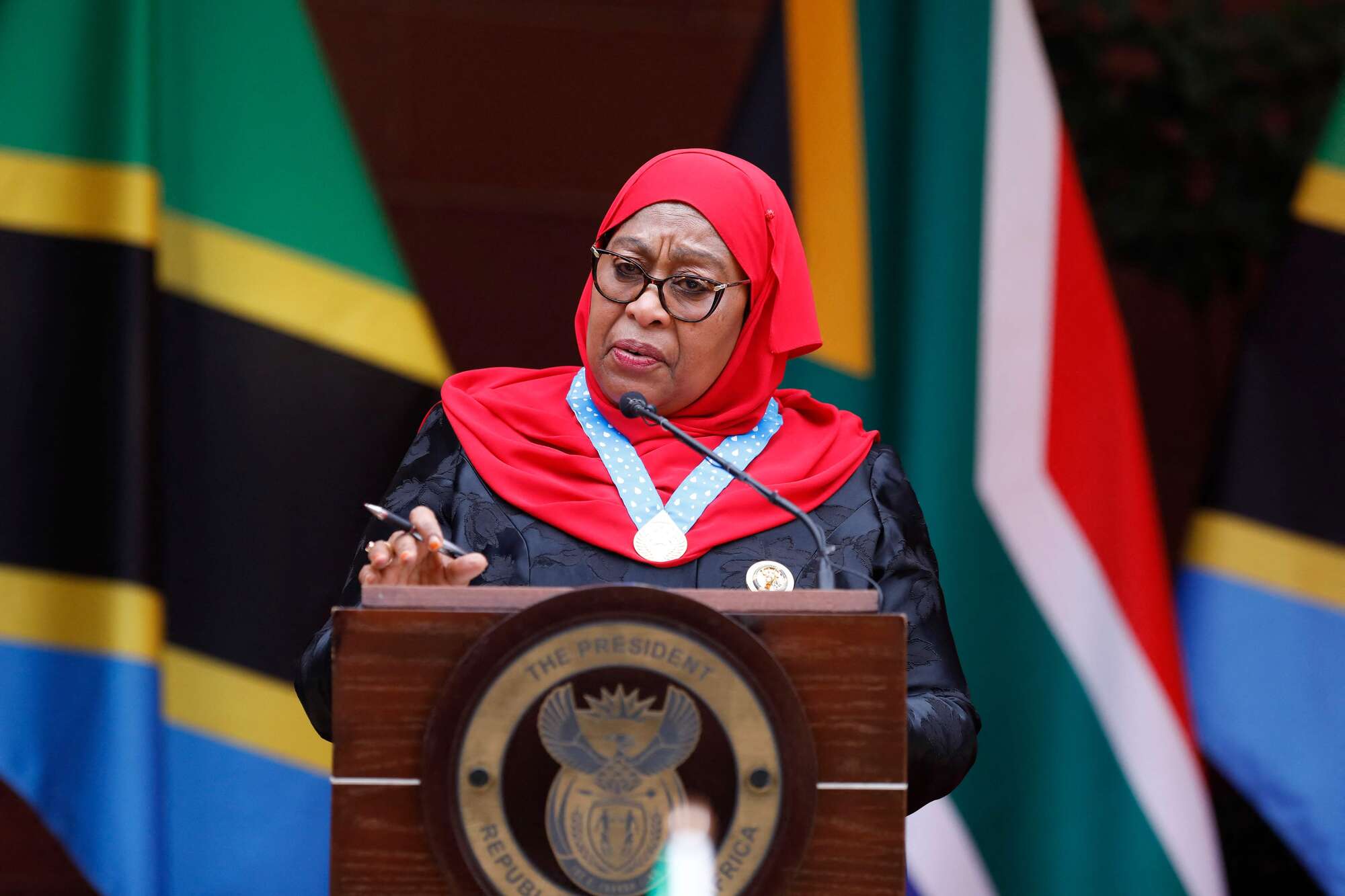
Dar es Salaam. Mamlaka ya Hali ya Hewa Tanzania (TMA) imetoa taarifa kuhusu hali ya joto katika maeneo mbalimbali nchini, ikisema vipindi vya ongezeko la joto vinatarajiwa kuendelea kujitokeza Februari 2025, hususan maeneo ambayo msimu wa mvua za vuli umeisha.
TMA, katika taarifa ya jana, Februari 12, 2025, imeeleza katika miezi ya hivi karibuni kumekuwa na ongezeko la joto katika baadhi ya maeneo nchini, hususan yanayopata misimu miwili ya mvua kwa mwaka.
“Hali hii imesababishwa na kusogea kwa jua la utosi sambamba na upungufu wa mvua unaojitokeza katika maeneo hayo. Kwa kawaida, vipindi vya jua la utosi nchini hufikia kilele mwishoni mwa Novemba wakati jua la utosi likiwa linaelekea kusini (Tropiki ya Kaprikoni) na hali hiyo hujirudia Februari wakati jua la utosi likiwa linaelekea kaskazini (Tropiki ya Kansa).
“Jua la utosi huambatana na hali ya ongezeko la joto kwa sababu uso wa dunia katika eneo tajwa huwa karibu zaidi na jua kuliko maeneo mengine,” imeeleza taarifa ya TMA kwa umma.
Mamlaka hiyo imeeleza kuwa katika kipindi cha Februari 2025, hali ya ongezeko la joto imeendelea kujitokeza katika baadhi ya maeneo nchini, ikielezwa hadi Februari 11, 2025, kituo cha hali ya hewa cha Mlingano, mkoani Tanga, kiliripoti kiwango cha juu zaidi cha nyuzijoto 36.0 sentigredi Februari 5, ikiwa ni ongezeko la nyuzijoto 2.1 sentigredi ukilinganisha na wastani wa muda mrefu kwa Februari.
“Kituo cha hali ya hewa kilichopo Uwanja wa Ndege wa Kimataifa wa Julius Nyerere, Dar es Salaam, kiliripoti kiwango cha juu cha nyuzijoto 35.0 sentigredi Februari mosi, 2025 (ongezeko la nyuzi joto 2.2 sentigredi),” imeeleza TMA.
Mamlaka imeeleza kituo cha Tanga kiliripoti nyuzijoto 35.1 sentigredi Februari 10 (ongezeko la nyuzijoto 2.3°C), Kibaha nyuzijoto 35.8°C Februari 10 (ongezeko la nyuzi joto 3.0°C), na Kilimanjaro nyuzijoto 34.3°C Februari 9, 2025 (ongezeko la nyuzijoto 0.6°C).
“Ongezeko la unyevu angani katika kipindi hiki linalosababishwa na mvuke wa bahari, hususan katika maeneo ya ukanda wa pwani na maeneo jirani, limechangia pia mwili kuhisi joto zaidi ya viwango vinavyoripotiwa,” imeeleza taarifa hiyo.
TMA imeeleza kuwa vipindi vya ongezeko la joto vinatarajiwa kuendelea kujitokeza Februari 2025 hususan maeneo ambayo msimu wa mvua za vuli umeisha.
Machi 2024, TMA ilieleza tathimini ya kitaalamu iliyofanywa ilionyesha wastani wa ongezeko la joto kwa mwaka 2023 ulikuwa nyuzi joto moja ya sentigredi, kiwango kilichovunja rekodi na kuandika historia ya kuwa mwaka wenye joto zaidi.
Kwa mujibu wa TMA, ongezeko hilo halikuwa kwa Tanzania pekee, kwani taarifa zinaonyesha wastani wa ongezeko la joto la dunia mwaka 2023 ulifikia nyuzi joto 1.40 za sentigredi na kuufanya kuwa mwaka wenye joto zaidi katika historia.
Hali hiyo inaelezwa ilichangiwa na uwepo wa El Nino (mfumo wa hali ya hewa unaosababishwa na ongezeko la joto la bahari katika eneo la kati la Kitropiki kwenye Bahari ya Pasifiki) na mabadiliko ya tabianchi.
Akizungumza na Mwananchi wakati huo, Mkurugenzi Mtendaji wa TMA, Dk Ladislaus Chang’a, alisema kiwango hicho cha joto kimepatikana baada ya kukokotoa wastani wa nyuzi joto katika kipindi cha miezi 12 na kuthibitika ongezeko la nyuzi joto 1.0, kiwango ambacho hakijawahi kurekodiwa nchini.
“Unapozungumzia wastani ni mjumuisho wa muda mrefu, baada ya kurekodi kiwango cha joto cha mwaka mzima ndipo tulipopata ongezeko la nyuzi joto 1.0, kiwango ambacho hakijawahi kurekodiwa. Ndiyo maana tunasema mwaka 2023 umevunja rekodi,” alisema.
Alisema kwa miaka ya nyuma walikuwa wakirekodi chini ya hapo, akitoa mfano mwaka 2022 ilikuwa nyuzi joto 0.5. Vingine vilivyorekodiwa kwa miaka mingine ni 0.3, 0.6, na 0.7.
Kwa upande wa viwango vya dunia, alisema wastani wa nyuzi joto 1.2 sentigredi kilirekodiwa mwaka 2022, na mwaka 2021 ilikuwa 1.1.
Kwa mujibu wa madaktari waliowahi kuzungumza na Mwananchi, ili kujiweka salama kwa kuwa mwili hupoteza maji mengi kupitia jasho, unywaji wa maji ni muhimu.
Pia inashauriwa kuacha kufanya shughuli kwenye joto na jua kali na kuepuka kutumia mafuta mazito ya kupaka mwilini.
Kutokana na joto kali, watoto wanaelezwa wanaweza kuathiriwa zaidi kwa kuwa ngozi zao ni laini, hivyo ni rahisi kupata vipele, ngozi kuwasha au matatizo mengine ya ngozi. Hivyo inashauriwa kuvaa mavazi mepesi.
Kutokana na joto kali, mwili hupoteza maji na madini chumvi, hali inayoweza kusababisha misuli kukakamaa na kiharusi kinachotokana na joto kali.
Joto kali linaelezwa na wataalamu linaweza kuwaathiri zaidi wazee, watoto, wanene kupita kiasi, na watu wenye magonjwa ya kudumu kama vile ya upumuaji na moyo.
Source: mwananchi.co.tz












